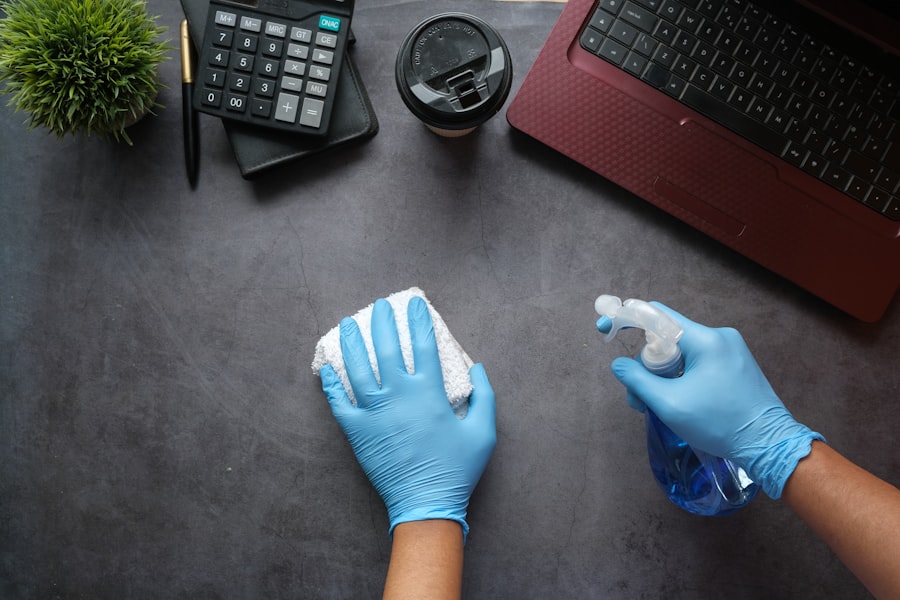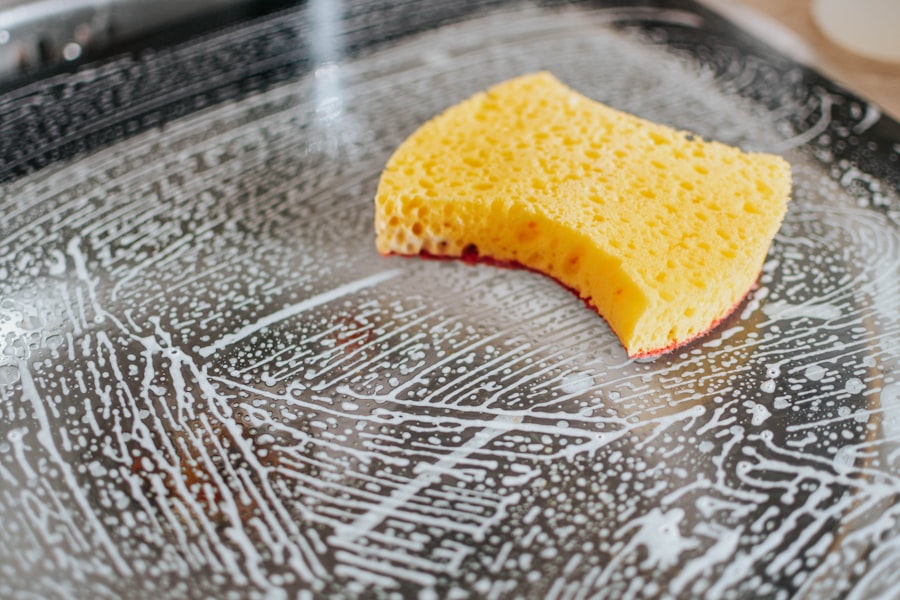In the realm of home decor and furniture maintenance, upholstery Scotch Guard treatment stands out as a crucial element for preserving the beauty and longevity of your furnishings. Upholstered furniture, whether it be a plush sofa, an elegant armchair, or a cozy ottoman, is often subjected to daily wear and tear. From spills and stains to dirt and dust, these elements can quickly diminish the aesthetic appeal of your beloved pieces.
This is where Scotch Guard treatment comes into play, acting as a protective barrier that helps to repel liquids and prevent stains from setting in. By investing in this treatment, homeowners can ensure that their upholstery remains vibrant and inviting for years to come. Moreover, the importance of Scotch Guard treatment extends beyond mere aesthetics.
It also plays a significant role in maintaining hygiene within the home. Upholstered furniture can harbor allergens, dust mites, and bacteria, which can negatively impact indoor air quality and overall health. By applying Scotch Guard, you not only protect your furniture from stains but also create an environment that is cleaner and healthier for you and your family.
In essence, this treatment is not just about preserving the look of your furniture; it is about enhancing the quality of your living space.
Key Takeaways
- Upholstery Scotch Guard treatment is important for protecting furniture from stains, spills, and wear and tear.
- The treatment works by creating a protective barrier on the fabric that repels liquids and prevents them from soaking in.
- Benefits of upholstery Scotch Guard treatment include easier cleaning, longer-lasting furniture, and maintaining the original look and feel of the fabric.
- Types of furniture that can benefit from Scotch Guard treatment include sofas, chairs, ottomans, and other upholstered pieces.
- Upholstery Scotch Guard treatment should be applied every 1-2 years, or more frequently for high-traffic or high-use furniture.
How Upholstery Scotch Guard Treatment Works
Understanding how upholstery Scotch Guard treatment works is essential for appreciating its value. The treatment involves applying a specialized protective coating to the fabric of your furniture. This coating is designed to create a barrier that repels water and oil-based substances, preventing them from penetrating the fibers of the upholstery.
When a spill occurs, instead of soaking into the fabric, liquids bead up on the surface, allowing for easy cleanup with minimal effort. The science behind this protective treatment lies in its chemical composition. Scotch Guard contains fluoropolymers that bond with the fibers of the upholstery, creating a durable shield against stains and spills.
This bond is not only effective but also long-lasting, ensuring that your furniture remains protected even after multiple cleanings. It is important to note that while Scotch Guard treatment significantly reduces the risk of staining, it does not make upholstery completely stain-proof. However, it does provide an added layer of defense that can save homeowners from the frustration and expense of dealing with stubborn stains.
Benefits of Upholstery Scotch Guard Treatment

The benefits of upholstery Scotch Guard treatment are manifold, making it a wise investment for any homeowner. One of the most significant advantages is the ease of maintenance it offers. With Scotch Guard applied, routine cleaning becomes less daunting.
Spills can be quickly blotted away without fear of permanent damage, allowing you to enjoy your furniture without constant worry about accidents. This ease of maintenance not only saves time but also prolongs the life of your upholstery. Additionally, Scotch Guard treatment can enhance the overall appearance of your furniture.
By preventing stains and dirt buildup, your upholstery will maintain its original color and texture for much longer. This means that your living space will continue to look fresh and inviting, which is particularly important if you entertain guests frequently or have children and pets in the home. Furthermore, a well-maintained piece of furniture can add value to your home, making it more appealing to potential buyers should you decide to sell in the future.
Types of Furniture that Can Benefit from Scotch Guard Treatment
| Furniture Type | Benefits of Scotch Guard Treatment |
|---|---|
| Sofas | Stain resistance, easier cleaning, and longer lifespan |
| Chairs | Protection against spills and stains, easier maintenance |
| Carpet | Prevention of liquid absorption, easier to clean and maintain |
| Upholstered Beds | Protection against spills and stains, longer lasting fabric |
While many people associate Scotch Guard treatment with sofas and chairs, its benefits extend to a wide range of upholstered furniture. Any piece that features fabric covering can be treated to enhance its durability and appearance. This includes dining chairs, ottomans, recliners, and even upholstered headboards.
Each of these items can be susceptible to stains and wear over time, making Scotch Guard treatment a valuable addition to their care regimen. Moreover, outdoor furniture made from fabric can also benefit from Scotch Guard treatment. Patio cushions and chairs are often exposed to the elements, leading to fading and staining from moisture and dirt.
By applying Scotch Guard to these items, homeowners can protect their outdoor investments and ensure they remain vibrant throughout the seasons. In essence, any upholstered item in your home or outdoor space can gain from this protective treatment, making it a versatile solution for maintaining furniture across various settings.
How Often Should Upholstery Scotch Guard Treatment Be Applied
Determining how often to apply upholstery Scotch Guard treatment depends on several factors, including usage patterns and environmental conditions. Generally speaking, it is advisable to reapply the treatment every six months to a year for optimal protection. High-traffic areas or homes with pets and children may require more frequent applications due to increased wear and tear on the upholstery.
It is also essential to consider the cleaning methods used on your furniture. If you frequently use water-based cleaners or have your upholstery professionally cleaned, these processes may strip away the protective coating over time. In such cases, it is wise to assess the condition of the Scotch Guard treatment regularly and reapply as needed to maintain its effectiveness.
By staying proactive about reapplication, you can ensure that your upholstery remains protected against stains and spills.
DIY vs Professional Upholstery Scotch Guard Treatment

When it comes to applying upholstery Scotch Guard treatment, homeowners often face the choice between a DIY approach or hiring a professional service. Each option has its advantages and disadvantages that should be carefully considered before making a decision. A DIY application can be cost-effective and convenient; many products are available for purchase at local retailers or online.
With proper preparation and application techniques, homeowners can achieve satisfactory results on their own. However, professional services offer expertise that may be difficult to replicate at home. Trained technicians have access to high-quality products and equipment that can ensure an even application and optimal results.
Additionally, professionals are knowledgeable about different types of fabrics and their specific care requirements, which can be particularly beneficial for delicate or specialty materials. Ultimately, the choice between DIY and professional treatment will depend on individual preferences, budget considerations, and the specific needs of your upholstery.
Common Misconceptions about Upholstery Scotch Guard Treatment
Despite its many benefits, there are several misconceptions surrounding upholstery Scotch Guard treatment that can lead to confusion among homeowners. One common myth is that Scotch Guard makes upholstery completely stain-proof. While it does provide a significant level of protection against spills and stains, it is essential to understand that no treatment can guarantee complete immunity from damage.
Prompt action in cleaning spills remains crucial for maintaining the integrity of your upholstery. Another misconception is that once Scotch Guard is applied, no further maintenance is necessary. While the treatment does enhance protection against stains and dirt buildup, regular cleaning is still essential for preserving the appearance and longevity of your furniture.
Homeowners should continue to vacuum their upholstered pieces regularly and address any spills promptly to ensure that their Scotch Guard treatment remains effective over time.
Tips for Maintaining Upholstery After Scotch Guard Treatment
Once you have invested in upholstery Scotch Guard treatment, maintaining your furniture becomes paramount for maximizing its benefits. One key tip is to establish a regular cleaning routine that includes vacuuming upholstered surfaces at least once a week. This practice helps remove dust, dirt, and allergens that can accumulate over time while also preventing them from settling into the fabric fibers.
In addition to regular vacuuming, it is essential to address spills immediately when they occur. Blotting up excess liquid with a clean cloth or paper towel can prevent stains from setting in. Avoid rubbing or scrubbing the area, as this can damage the fabric fibers and worsen the stain.
Instead, gently dab at the spill until it is absorbed as much as possible before using appropriate cleaning solutions if necessary. By following these tips and understanding the importance of upholstery Scotch Guard treatment, homeowners can enjoy beautiful and well-maintained furniture for years to come. Investing in this protective measure not only enhances the appearance of your upholstery but also contributes to a healthier living environment overall.
